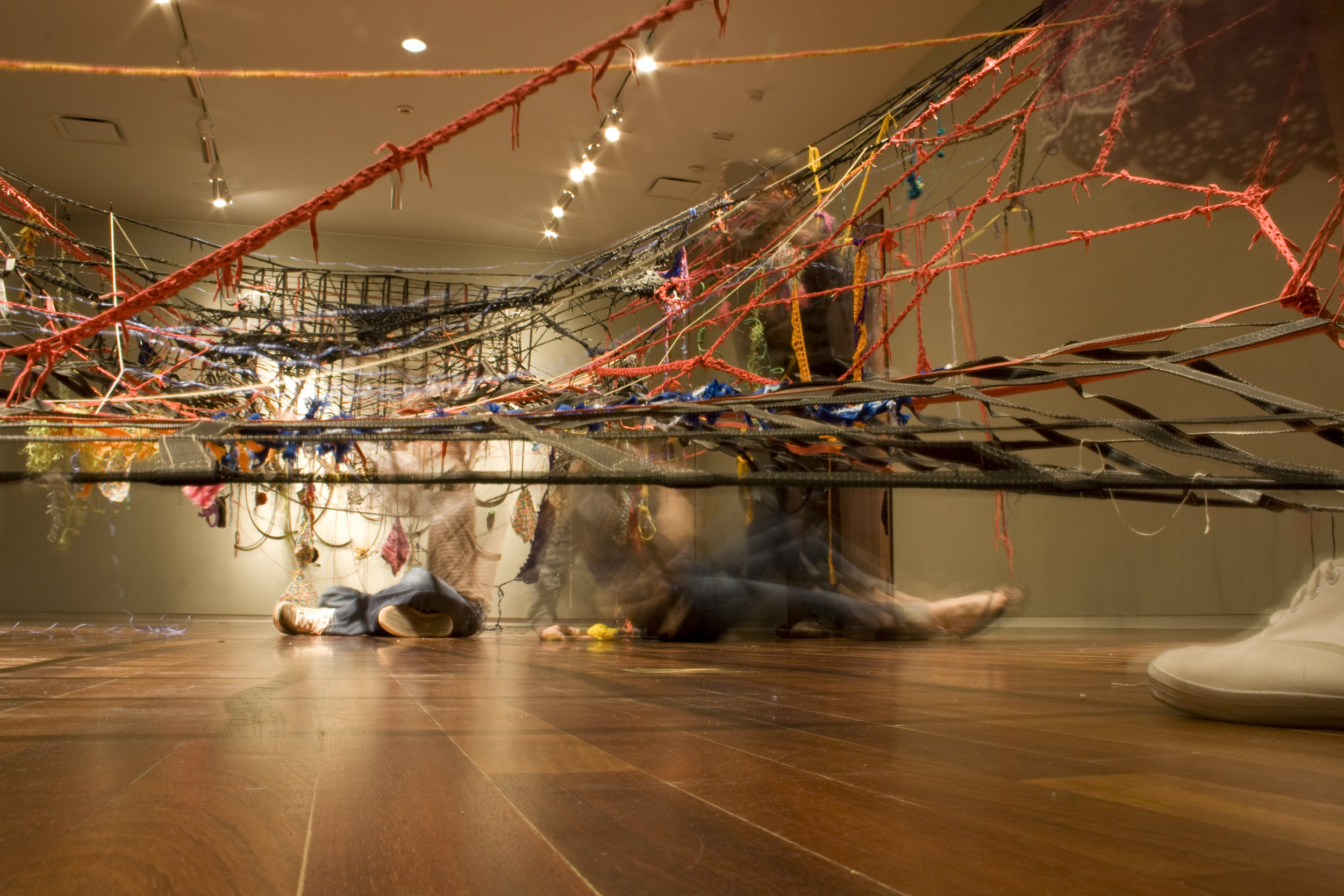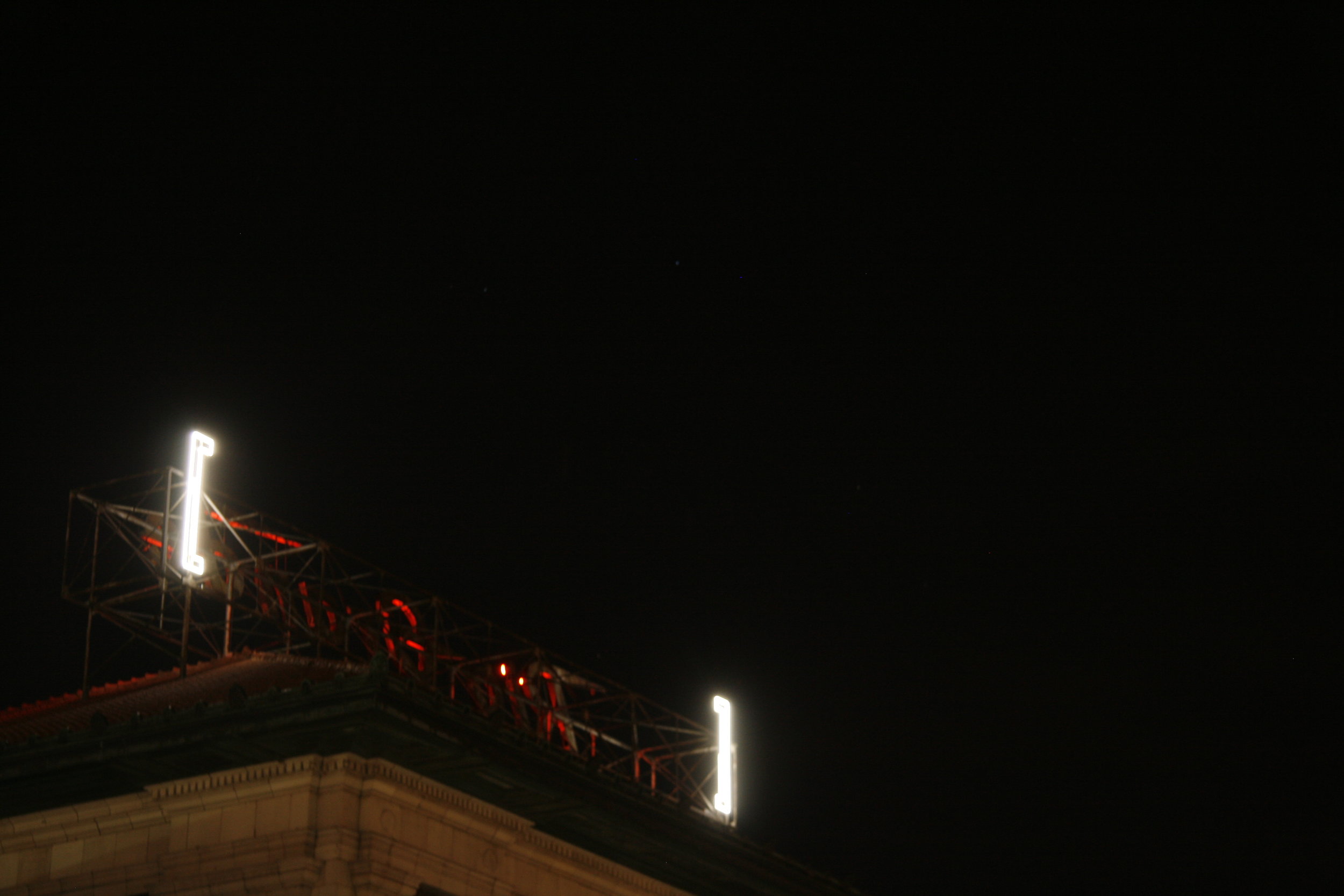Colby Brewer
Colby Brewer is known for his site-responsive artworks which challenge fixed ideas of interactional spaces by engaging institutions and their architecture. He produces ambitious sculptural installations that change the spatial dynamic of the site in which they are placed and at times, offer opportunities for audience interaction. Colby’s studio practice involves a constant mix of drawing, collage, sculpture, and video explorations. He has exhibited in galleries and museums in New York, Budapest, and Salt Lake City. In 2009, he was named Visual Arts Fellow for the Utah Division of Arts and Museums. He holds an MFA from Pratt Institute. Colby teaches drawing at Waterford School where he is Chair of the Visual Arts. He also organizes Waterford School’s Visiting Artist Program which has hosted nationally renowned artists like Sheila Pepe, Leighton Pierce, Burk Uzzle, and more.
Colby Brewer is not only a significant artist (in his own words he focuses on “Work that challenges fixed ideas of interactional spaces by engaging institutions and their architecture”) and a wonderful teacher, he also happens to be the Board chair of NOW-ID. What I find so inspiring about Colby is his commitment to and deep knowledge of contemporary art, his curiosity and his ability to make things happen.
As our Board chair he is forward looking, generous and widely connected, he is a calming influence at our meetings and as a person he is just plain lovely.
I am excited to feature his voice here.
Charlotte Boye-Christensen
Tell us a little bit about your background; when did you know that you wanted to be an artist?
I’ve been drawing as long as I can remember and have always loved the process. My parents must have picked up on that because my mom got me a cool little light box, some books on perspective drawing and things like that at a very young age. I remember being impressed with my dad’s ability to draw and the way he held a pencil, the way he pulled lines instead of pushing them. The sound of the pencil on paper and the look of lines were really impressive to me. He’s also got this great handwriting that is sort of his own unique version of architectural lettering. I studied the movements and short, intentional strokes he used to write. So, very early on I was certainly hooked on drawing and making marks. I also realized as a teenager growing up in a very conservative environment that I didn’t quite fit in. Artists were always the people I wanted to be around and to be like.
Can you talk a little bit about your creative process? Do you start with an idea, an emotion, energy, an image? Do you have specific rituals when you work?
There have been times when I did have daily rituals that would lead into my process, but they’ve been rare. As it stands now, I’m a full time teacher, parent of two teenagers, etc. and my life doesn’t really allow for ritual. My time gets too chopped up for it. If I’m making smaller sculptural works I usually set up a system of limits that governs the making of the work. In that way, I do have ritual in my work. I’ve found over the years that I’m a reactive sort of artist. I feel like I do my best work when I’m responding to a specific site. For example if I’m given a chance to exhibit somewhere, I’m almost always compelled to examine the site and propose something outside or on top of the building rather than inside on the walls. NOW-ID’s upcoming Rite of Spring project is perfect for an artist like me to be involved in - we did a site visit a few days ago and I’m obsessing over it
A sculpture by Colby Brewer called 'ante-tracery' - rubber and screws, 4' x 3' x 2"
Who are some of the people who have inspired you in your work and why?
It’s funny, and maybe even cliché, but some of my earliest and favorite influences were punk bands and punk zines. There was a great music scene when I was growing up and I spent a lot of time and effort trying to tag along and participate in that. What else was a kid in suburban Salt Lake City going to do, right? Something about that way of approaching art and community made sense to me and has remained with me. I’ve had a lot of great teachers and friends who are artists - too many to list. Sheila Pepe has been a big influence as just an incredibly smart person, maker of things, connector of people. I had the honor of getting to know Burk Uzzle and Janet Kagan who are a huge influence in terms of their kindness, work ethic, generosity, and all around excellence.
Tell us about projects that you have coming up that excite you?
I’m obviously very excited about what NOW-ID is doing and the upcoming Rite of Spring project! I’ve also got a small mural collaboration coming up with local artist and longtime friend Ruel Brown. And in September I’m set to work on a video collaboration with documentary film maker Jenny Mackenzie and a group of Waterford students. And I’m looking forward to meeting up with you in Budapest this summer to scout out some potential performance sites!
What characterizes art in the State of Utah - is there a unique Utah art movement and if so, what and who epitomizes that for you and why? And why is work that is developed here important to have included in the National and International discourse about art?
Maybe that it is so often made by people with deep connections to other places, and yet they choose this as home base. I love that idea anyway. I don’t really see anything that could be called a movement here. Once you go beyond the traditional, regional picturesque and look for something more, there’s quite a bit of variety. It’s important for great art made anywhere to be included in the National/International discourse. The world is a lot smaller than it used to be.
You are an established teacher of Art at Waterford School, has teaching in any way helped define your own creative voice? And what makes a good teacher of art?
Teaching helps me to not turn too far into my own way of thinking. Because it’s all built on communication and relationships with other people who you are offering up ideas to. You need to always be aware of other people’s perceptions of the work you’re presenting and you need to have a good idea of whether you are reaching them or not. Good teachers have an ability to meet students where they are and then, hopefully, add a little bit to that to raise their skill level and thinking. My work has definitely evolved into the more collaborative and participatory as a direct result of teaching.
Where do you look for inspiration?
I often look to film and books, to travel and to language. When we’re not teaching in Utah, we live in Budapest with Anikó’s family. So, a sort of international, bi-lingual, dual-identification has become a huge influence on my work. I find inspiration in the fuzzy overlapping of locations and sort of never being settled in one place.
Who do you consider to be three of the most significant artists in the world and why?
Béla Tarr. I love his films for their look and pacing and the long, long shots. I find his work to be visually mesmerizing and conceptually brave. I also love the work of Shirin Neshat for many of the same reasons. I was transfixed by her film Fervor when I first saw it. I’ve also become a big fan of Julian Rosefeldt. Last summer I saw Manifesto at the Hungarian National Gallery and was blown away by the incredible way it was conceived, the way it looked, and Cate Blanchett’s ability to perform it.
What is your favorite quote?
The relation between what we see and what we know is never settled. Each evening we see the sun set. We know that the earth is turning away from it. Yet the knowledge, the explanation, never quite fits the sight. — John Berger
If you hadn't become an artist what profession do you think you would have excelled in/at?
I wanted to be an architect when I was younger, but never had the math skills.
Looking towards the future – where do you want to be and what do you want to be doing in 25 years?
I have a suspicion that I might be living in Europe. I hope by then (wherever I am) that I’ll have enough experience and the means to help younger artists realize their ambitions.





